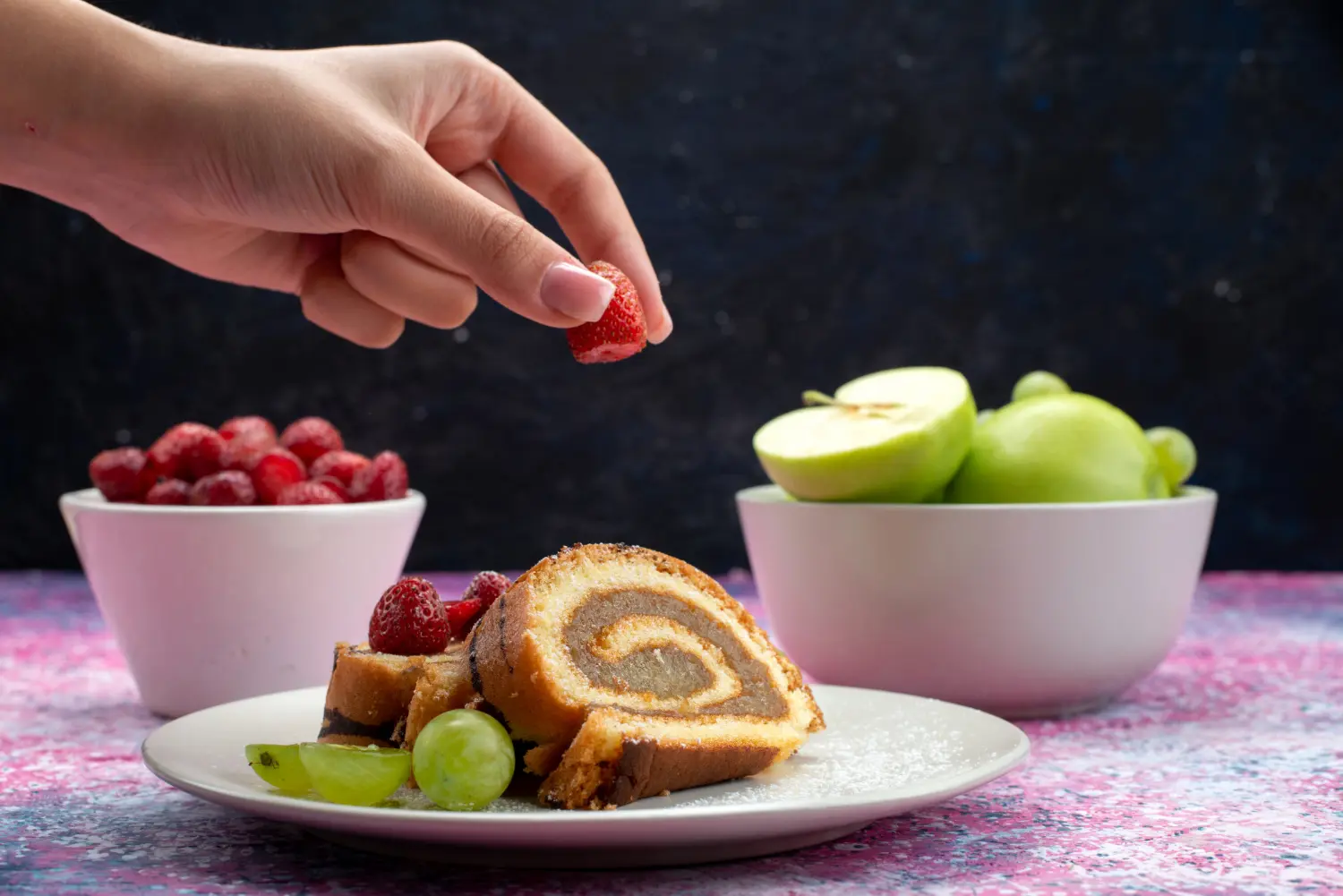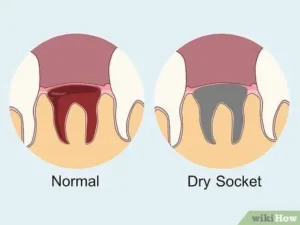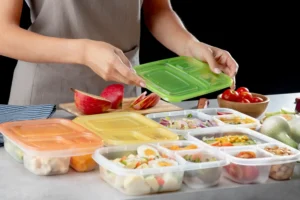Tooth extraction is a very common dental procedure, with more than 5 million wisdom teeth removed annually in the U.S. According to the American Dental Association, proper aftercare directly affects how fast your mouth heals. One of the biggest concerns patients have is: “when can I eat solid food after tooth extraction?”
Eating solid foods too early can disturb the healing blood clot and cause dry socket, a complication that affects 2, 5% of patients, as reported by the Cleveland Clinic.
This detailed guide explains the exact eating timeline, safe foods, healing stages, scientific facts, and the complete care routine for a smooth recovery.
Understanding the Healing Timeline (0, 48 Hours)
The first 24, 48 hours after tooth extraction are critical. A protective blood clot forms inside the socket, which is the foundation for proper bone and tissue healing. Disturbing this clot by chewing or biting solid food can lead to serious complications.
To answer your main question — when can I eat solid food after tooth extraction — dentists recommend avoiding any chewing in the first two days and sticking strictly to liquids or ultra-soft foods.
Recommended foods during the first 48 hours:
- Smooth yogurt
- Mashed bananas
- Protein shakes
- Applesauce
- Warm (not hot) soups
- Mashed potatoes
- Ice cream or sorbet
According to the NIDCR, proper care in the first 48 hours prevents over 90% of post-extraction complications.
Avoid during this time:
- Straws (due to suction)
- Solid foods
- Hot beverages
- Spicy or acidic foods
Transitioning to Semi-Solid Foods (Day 3, Day 7)
After the initial two days, swelling begins to decrease and discomfort becomes more manageable. However, the gums are still tender, and the healing blood clot must remain protected.
This is usually the phase where patients ask again: when can I eat solid food after tooth extraction?
The answer: not yet — but semi-solid foods are okay.
Safe foods for Day 3, 7:
- Oatmeal
- Scrambled eggs
- Soft pasta
- Rice pudding
- Boiled vegetables
- Cottage cheese
- Smooth peanut butter
A study published in the Journal of Oral and Maxillofacial Surgery states that gum tissue achieves 35, 45% healing strength by Day 7, which means you can eat soft, mashable foods, but definitely not hard or crunchy foods.
Avoid foods like:
- Chips
- Fried snacks
- Nuts
- Crackers
- Hard bread
- Raw vegetables
When Can I Eat Solid Food After Tooth Extraction? (Day 7, 14)
For most patients, 7, 10 days is the average time to begin reintroducing tender, easily chewable solid foods. This is the stage where the answer to your key question — when can I eat solid food after tooth extraction? — becomes clearer:
➡ Light solid foods are generally safe after one week.
➡ Full, hard, crunchy solids should wait at least two weeks.
Examples of foods that you can safely introduce:
- Soft chicken (well-cooked)
- Fish
- Rice
- Soft roti or bread
- Pancakes
- Well-cooked vegetables
Continue avoiding:
- Pizza crust
- Hard meats
- Popcorn
- Nuts
- Crunchy snacks
According to a healing timeline shared by Mayo Clinic, tissue repair reaches 50, 60% completion by the second week, meaning moderate chewing is possible.
Full Chewing Ability and Hard Foods (Week 3, Week 6)
By Week 3, most swelling has disappeared, and you can begin eating almost all normal foods. However, your dentist may advise caution if you had:
- Multiple teeth removed
- Surgical extraction
- Impacted wisdom tooth
- Dissolvable stitches
Foods usually safe after Week 3:
- Meat (tender cuts only)
- Burgers
- Pizza
- Vegetables (raw included)
- Crunchy snacks in moderation
- Nuts (Week 4, 6 preferred)
Bone tissue takes longer to heal compared to soft gum tissue. Published dental studies show that the bone beneath the gums reaches around 80% strength by Week 6.
Care Routine for Fast & Safe Post-Extraction Healing
A good aftercare routine directly affects how soon you can safely return to solid foods. Below are professional guidelines commonly recommended by oral surgeons.
1. Maintain Gentle Oral Hygiene
- Brush normally but avoid the extraction site.
- After 24 hours, rinse with warm salt water 3, 4 times daily.
- Avoid strong mouthwash for the first 48 hours.
2. Reduce Swelling
- Ice pack for 15, 20 minutes in the first 24 hours.
- Warm compress after Day 2.
3. Avoid Suction or Pressure
- Avoid spitting forcefully.
- Avoid straws.
- Avoid smoking for 72 hours — smoking increases dry socket risk by 300% (Cleveland Clinic).
4. Follow the Right Diet
Your diet determines how smoothly the healing progresses. Avoid anything sticky, crunchy, or chewy until the gums are fully stable.
5. Follow Medication Schedules
Take prescribed antibiotics, painkillers, and anti-inflammatory medications exactly as directed.
What If Solid Food Causes Pain or Discomfort?
If you experience sharp pain, foul smell, bitter taste, or exposed bone after eating solid food, you may have developed dry socket, which is a medical emergency.
Symptoms include:
- Bad taste
- Severe pain spreading to ear or jaw
- Hole in extraction site
- Visible white bone
Stop solid foods immediately and switch back to soft foods until you see your dentist.
Clicks nakash blogs to read more informational blogs.
Conclusion
Understanding when can I eat solid food after tooth extraction is essential for preventing complications and ensuring a smooth recovery. Most patients can begin soft solids after 7 days and resume harder foods after 2, 3 weeks, depending on the complexity of the extraction and how well the gum tissue heals. Following your dentist’s aftercare instructions, choosing the right foods at each stage, and avoiding anything that can disturb the blood clot are the keys to safe and fast healing.
Remember: every mouth heals differently. If you experience unusual pain, dryness, bad taste, or difficulty chewing even after a week, consult your dentist immediately. With the right care routine and diet progression, you can return to normal eating confidently and safely
FAQs
1. How long after extraction can I eat normally?
Most people return to normal eating in 2, 3 weeks, depending on the tooth and healing speed.
2. Can I eat rice after tooth extraction?
Yes—soft rice can usually be eaten from Day 3 onward. Chew gently on the opposite side.
3. Is milk safe to drink after extraction?
Yes. Milk is safe and helps with recovery due to its protein content.
4. When can I eat spicy food?
Avoid spicy food for 5, 7 days, as it may irritate the healing gum tissue.
5. Can I eat meat after extraction?
Soft chicken or fish can be introduced after 1 week. Hard or chewy meats should wait 2, 4 weeks.
References (External Sources)
- American Dental Association , https://www.ada.org
- Mayo Clinic , Wisdom Tooth Extraction , https://www.mayoclinic.org
- Cleveland Clinic , Dry Socket , https://my.clevelandclinic.org
- NIDCR , Tooth Removal Guidelines , https://www.nidcr.nih.gov
- Journal of Oral and Maxillofacial Surgery , Healing Timeline Research
- University of Michigan Dentistry , Aftercare Instructions




